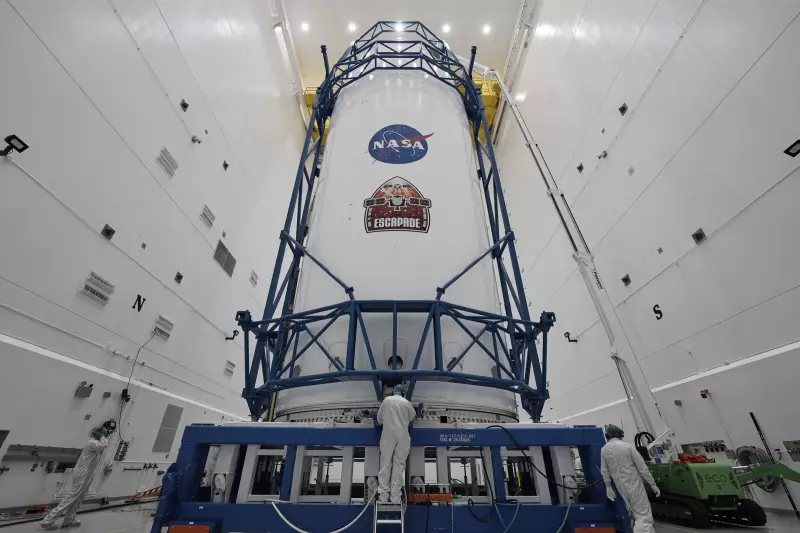
NASA has embarked on an unprecedented journey to Mars with the launch of its innovative EscaPADE mission, marking a significant milestone in planetary exploration. The mission features twin spacecraft that will study the Red Planet's atmosphere from complementary orbital positions.
An Unconventional Path to the Red Planet
The two Mars orbiters for NASA's EscaPADE (Escape and Plasma Acceleration and Dynamics Explorers) mission are now safely secured within the nose cone of Blue Origin's New Glenn rocket. The spacecraft were prepared for their journey at Cape Canaveral, Florida, with confirmation of their secure placement occurring on October 31.
What makes this mission particularly remarkable is its winding trajectory to Mars. Unlike traditional direct paths to the Red Planet, EscaPADE will follow a more complex route that leverages orbital mechanics to reach its destination efficiently. This approach represents a new paradigm in interplanetary travel that could influence future missions.
Scientific Objectives and Mission Details
The twin orbiters are designed to work in tandem, studying how Mars' atmosphere escapes into space and how the solar wind strips away the planet's protective layers. This research is crucial for understanding the evolution of Mars' climate and why it transformed from a potentially habitable world to the barren planet we observe today.
By positioning two spacecraft in different orbits around Mars, scientists will be able to observe atmospheric phenomena from multiple angles simultaneously. This dual perspective will provide unprecedented insights into the dynamic interactions between Mars' atmosphere and the solar wind that have shaped the planet's current state.
Launch Vehicle and Future Implications
The mission's launch aboard Blue Origin's New Glenn rocket represents another significant achievement for commercial space partnerships. The successful integration of NASA's scientific payload with commercial launch capabilities demonstrates the growing synergy between government space agencies and private aerospace companies.
As the mission progresses through its winding journey toward Mars, the scientific community eagerly anticipates the wealth of data these twin orbiters will collect. The insights gained from EscaPADE could fundamentally change our understanding of atmospheric processes not only on Mars but potentially on other planets throughout our solar system and beyond.
The mission timeline calls for the spacecraft to reach Mars and begin their orbital science operations in the coming years, opening a new chapter in our exploration of the Red Planet and advancing our knowledge of planetary evolution throughout the cosmos.





